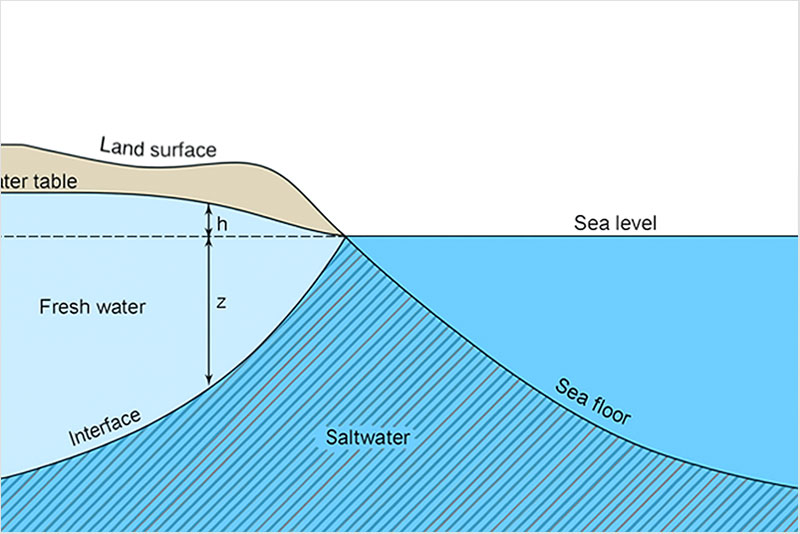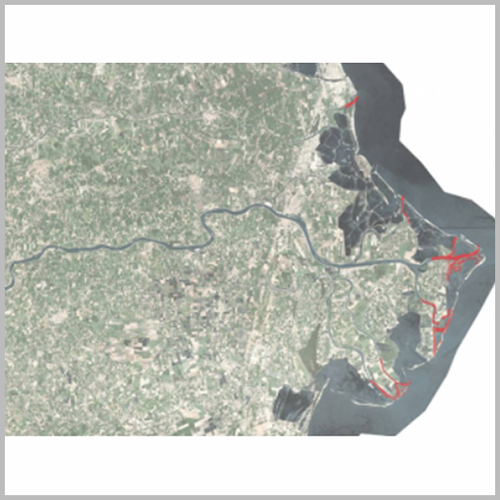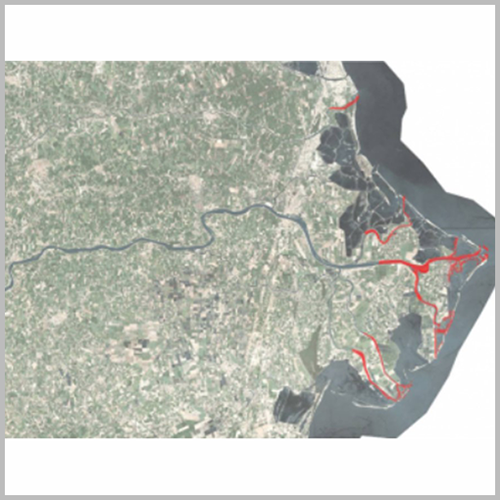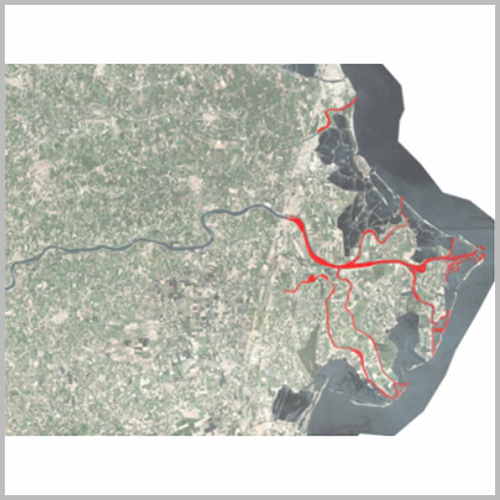In recent years, the effects of climate change have increasingly impacted our environment and daily lives. Storms, tornadoes, wildfires, and floods are some of the extreme events we’ve had to face—and will continue to face.
However, a hidden issue often goes unnoticed: it concerns groundwater and is known as saltwater intrusion.
Saltwater intrusion is a natural phenomenon typical of coastal regions, where seawater infiltrates freshwater aquifers, sometimes penetrating several kilometers inland, causing serious water supply issues.
This phenomenon is directly connected to the ongoing drought affecting much of Italy, leaving dry riverbeds and depleted streams. The drought peaks in summer but originates from warmer winters with low snowfall and limited rainfall.
Key data: Between December and January, Italy received 60% less snow and 80% less rain compared to seasonal averages, with temperatures 1.7°C above the 1981–2010 mean.
Factors worsening river conditions include:
- Excessive irrigation withdrawals
- Unauthorized water extraction
- Large mountain hydroelectric plants
- Alpine reservoirs used for tourism
This situation has taken Italy by surprise. Once abundant in freshwater, the country must now urgently develop new sustainable water use and management plans.
Più nel dettaglio, il cuneo salino è un fenomeno che si verifica quando la portata del fiume e la pressione delle falde non sono sufficienti a contrastare l’ingresso di acqua salata verso l’entroterra. L’acqua dolce, avendo una densità inferiore rispetto a quella salata, tende a spingerla verso il basso, generando la tipica forma a cuneo. Da qui il nome di cuneo salino.
In condizioni normali, il cuneo salino si estende nell’entroterra per alcuni chilometri, con variazioni influenzate da stagionalità, precipitazioni e maree. Tuttavia, la grave siccità di quest’estate ha causato un’intrusione di acqua salata fino a 20-30 chilometri nell’entroterra in pochissimo tempo, generando una lunga serie di problematiche ambientali.
1950s–1960s
1960s–1970s
2000s
The salinization of aquifers has led to the cessation of agricultural irrigation and accelerated the process of desertification of coastal areas, causing an environmental impact that has compromised flora and fauna and, more broadly, delta ecosystems.
Added to this is the difficulty in water supply for water utilities, equipped with treatment plants unable to desalinate water with such high salinity.
We realize that water is an increasingly precious resource, limited and at times insufficient to meet society’s demands. It is therefore necessary to propose appropriate solutions to counter phenomena like the saltwater wedge.
Among the ideas currently under evaluation are:
- a saltwater barrier,
- control of withdrawals,
- a greater water release from lakes and hydroelectric reservoirs,
- the creation of micro retention basins for use during the driest periods,
- and sustainable drainage solutions in urban areas.
Unfortunately, like many climate change–related issues, until people develop a concrete awareness of the disastrous consequences they face, it will be difficult to change their habits.
It is crucial to understand that water is the foundation of our lives and must be safeguarded, avoiding any form of reckless exploitation.








